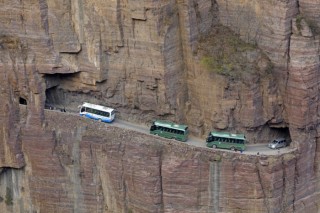Where Safety Meets Adventure
A tent serves as a temporary shelter or camping accommodation, typically crafted from materials like canvas, nylon, or other durable textiles.
Tents find extensive use in outdoor activities, such as camping, hiking, mountaineering, and field adventures, providing essential protection against wind, rain, and sun, while also offering insulation and safety.
Tents come in various structures and sizes, including single, double, and family models, tailored to diverse needs and environments.
Proper tent assembly demands some fundamental skills to ensure stability and comfort. When setting up a tent, selecting a flat terrain and secure anchoring is vital to shield it from inclement weather.
Proper interior organization also plays a significant role, allowing the arrangement of sleeping bags, pads, luggage, and other items for a relatively comfortable wilderness rest.
For outdoor enthusiasts, tents are indispensable equipment. They create a haven against the elements, allowing people to better immerse themselves in the beauty of nature and enhance their overall outdoor experience.
But what color of the tent should you buy? Tents used in snowy mountain regions often feature yellow or orange hues, exuding a professional appearance. However, if you primarily engage in low-altitude mountain crossings, a yellow outer tent may attract small flying insects. Therefore, it's advisable to opt for bright, eye-catching colors such as blue, green, or orange.
Setting up a tent involves assembling its parts on-site. Thus, familiarity with the names uses, and overall tent structure is crucial for a quick and convenient setup. Let's delve into the essential components:
1. Tent Body: This encompasses the tent's fabric, poles, and floor.
2. Poles: Also known as vertical supports, they stand upright on the ground, ranging from straight to interconnected varieties. Some poles require wire connections for reinforcement.
3. Frame: Used in dome or hut-style tents, it consists of short bar-shaped elements forming the framework's pillars or beams.
4. Canopy: The top part of the tent.
5. Roof: Forms the sloping surface of the tent.
6. Walls: Sides of the tent, which may be absent in certain designs.
7. Door: The entrance to the tent, occasionally equipped with windows.
8. Ground Mat: Placed on the tent's floor, especially useful in humid conditions, often requiring an additional layer of bamboo mat in such environments.
9. Fly Sheet: Placed over the roof to protect from strong sunlight, serving as a secondary roof.
10. Main Rope: Also referred to as the guyline, it prevents poles from tilting and is secured with stakes.
11. Corner Rope: Extending from the tent's four corners, secured with stakes.
12. Waist Rope: Extending from the tent's roof edge, fixed with stakes.
13. Stakes: Inserted into the ground to secure ropes and the bottom edge of the tent fabric. Available in wood, metal, or synthetic resin.
14. Mallet: Used to drive stakes into the ground, typically wooden or metal.
15. Storage Bag: A cloth bag for storing the tent fabric, poles, stakes, and mallet.
These components collectively form the complete tent structure, offering wind resistance, rain protection, and insulation outdoors.
The specific features and components of a tent may vary based on its design and intended use. By understanding these parts and their roles, you can ensure a successful and enjoyable camping experience.
You may like:



